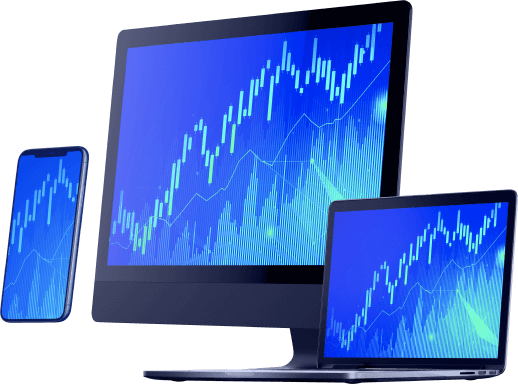Leverage & Margin
A financial market is a hub of economic activities with extensive buying and selling of financial assets that include stocks, shares, derivatives, bonds, and currencies. The essential traits of a financial market are setting prices for global trade, providing growth opportunities and allowing investors to experiment with liquidity.

Course name
Start trading

This content available only for register client
The Significance of Leverage and Margin in the Financial Market
We are all familiar with the ancient barter system where goods and services were exchanged. Today, a modern form of this involves the transactions between the producers or manufacturers and consumers. A financial market is a platform that provides an ease to both the industry (the producers looking to raise capital) and the investor (seeking to spend and get better returns).
The financial securities, also called as financial instruments are contracts that represent some sort of monetary value between two parties. The contract is seen as an asset for the buyer and a financial liability for the seller. The contract can be traded or settled, and an asset can be anything from a bond, share, stock, to derivatives and Forex. The financial instruments are further categorized in Money Market Instruments, Debt Securities, Derivative Instruments, Equity Securities, and Foreign Exchange Instruments.
The derivative instruments have grown quite popular investment opportunities as one can get better
gains and return. In simple terms, a derivative instrument is a contract whose value is derived from
an underlying asset. Some of the examples of derivatives include Contract of Difference (CFD),
Futures, Swaps, Options, and Forwards and they are commonly used as leverage, speculation, and
hedging risk. The underlying asset or factor on which the derivative depends include stocks,
indices, Forex rates, bonds, and interest rates.
Leverage and Margin in Trading
Two of the key terms in financial trading markets are ‘leverage’ and ‘margin.’ In broad meaning, leverage is a credit given by financial service provider that allow traders to perform in potentially large markets. At the same time, leverage is also an ability to pay only a small percentage of deposit to open a trade. In derivative trading, CFD is considered to be a leverage instrument as you only need to invest a small amount but get the full exposure of the trade, the deposit is margin requirement and allows you to magnify your profits but also increases the chance of potential losses too.
Margin, on the other hand, is borrowed funds or deposit that the trader uses as a leverage. Margin is the amount needed to open a position with the financial service provider; the amount varies from different financial service provider and is expressed as a percentage of the full amount. Based on the margin the financial service provider requires, you can determine the maximum leverage you can gain from your trading account. The essential margin terms that you need to know are
- Margin Requirement: The amount required to open a position with your financial service provider
- Account Margin: The total amount you have in your trading account
- Used Margin: The amount of money that is being used in open positions
- Usable Margin: The remaining amount that is not tied up in open trades
- Margin Call: When the amount in your account cannot cover your potential loss

The Relationship between Leverage and Margin
Leverage is a key investment strategy that relies on borrowed funds or the use of financial instruments to increase the return on investment. The borrowed capital comes from the financial service provider. Leverage ensures a higher trading power and allows you to trade in positions that are larger than the amount of money in your margin account. This may result in higher returns but also higher losses, thus leverage shall always be used with caution by investors.
Leverage is expressed in a ratio such ‘X: 1’, and its value depends on the margin requirements that the financial service provider determines for your trading account. Leverage denotes the actual amount of money in your account and the money you can trade with.
Margin is the money expressed in percentage for the full amount of the position. Many of the financial service provider require margins that range from 1%, 2% to .5% and .25%. But if a financial service provider requires you to maintain a minimum 1% margin in your account, then you must have 1% of the cash available to further trade with.
If the leverage ratio is 100:1, then the margin requirement is calculated to be 1% or 0.01. Thus, leverage is said to have an inverse relationship with margin.
The Use of Leverage in CFD Trading and Forex
The concept of leverage that allows borrowed capital from the financial service provider to be used to multiply potential returns, or losses increases its acceptance for both investors and business companies. By using different financial instruments such as CFD, Futures, and Options, investors can lever their investments. The business companies can introduce stocks to raise capital, and use debt financing to grow their business.
In financial markets, traders are offered different leverage ratios that they can use to trade a significant number of assets. The size of the leverage offered relies on the size and type of asset; for example, the maximum leverage for crypto-currencies is lower than that of Forex currencies.
In CFD trading and Forex, the monetary benefits of leverage will always remain, in case traders are successful in making profit, but traders should also be aware of the risks of loss, which are magnified with leverage and/or decide on the size of leverage suitable for their trading needs before using it for trading. It is always best to start with a low leverage ratio at first to prevent any significant losses.
The information above is for education purposes only and cannot be considered as investment advice. Past performance is not reliable indicator of future results.



